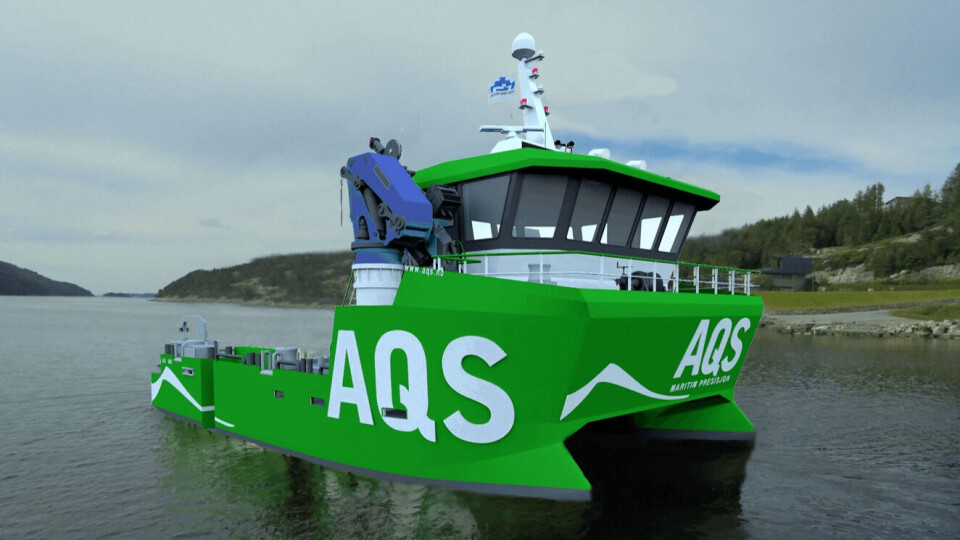
Ship architect Macduff has designs on Norway after winning AQS order
Scotland’s Macduff Ship Design is hoping to gain an important foothold in the Norwegian market after being chosen to design a new hybrid-power workboat for AQS, a major provider of boat services to Norway’s salmon farmers.
The order for the design of the 18.5-metre catamaran is the result of Macduff’s cooperation with Norwegian company Skagen Ship Consulting, the main contractor for the vessel.
Macduff Ship Design managing director Ian Ellis said the contract from Skagen is the result of a mutually beneficial relationship the companies have developed over the last two or three years which leverages each company’s connections in Scotland and Norway.

Bid support
The Aberdeenshire company has provided early-stage drawings and costing assistance to Skagen for numerous bids to be the primary contractor for a new-build. If Skagen wins the contract, it may then choose Macduff to design the vessel.
The collaboration can also work the other way. If Macduff Ship Design wins an order for a vessel design, Skagen may win the build contract.
“We’ve got two boats building for Blueshell Mussels in Shetland, which are about three-quarters finished,” said Ellis. “That was our contract with the owners and Skagen won the contract to build them.
“This new project is the other way around: Skagen have won the contract with AQS and are getting us to work with them on the design.”
Large battery pack
The new vessel, which is still in the final design stages, will have a battery pack with a capacity of 1,156 kWh. That’s the combined capacity of around a dozen Tesla cars and will allow the boat to operate for long periods without using its engine.
“Potentially, use of the auxiliary engines is somewhat lower than it might be in a lot of hybrid vessels, particularly if they able to plug in overnight,” explained Ellis.
“Everything is driven off the battery pack, all of the ship’s equipment and propulsion. The propulsion is driven by 2 x 375 kW electric motors. This gives you an hour and a half at full power on the batteries alone, and given that in most cases you are unlikely to be using full power, in most cases the vessel has two or three hours’ worth of propulsion on the batteries.”
Chartered to Cermaq
AQS has already entered into a long-term charter agreement with Cermaq Finnmark for the catamaran, which will be built in its entirety at TRX Marine in Yalova, Turkey.
It is unusual for Norwegian marine operators to choose a design from outside Norway, and Ellis hopes the catamaran’s inclusion in the AQS fleet will encourage them to see Macduff as a viable alternative.
“This is quite an important order for both us and Skagen going forward. It has generated a lot of interest. Skagen have received interest in this vessel and in other vessels from a number of UK and Norwegian owners from the publicity that this has got. It’s an important stepping stone,” said Ellis.
Macduff Ship Design has numerous vessels operating in Scottish aquaculture. The first vessel ever designed by the company nearly 30 years ago was for the aquaculture industry and it has been involved in new builds ever since. These include Inverlussa Marine Services’ 25m Gina Mary, contracted to Mowi Scotland, and 26.5m Kallista Helen, contracted to Scottish Sea Farms.






















































